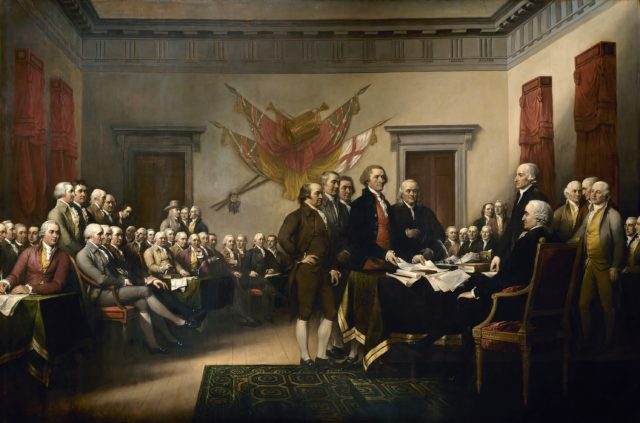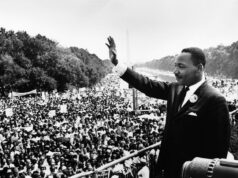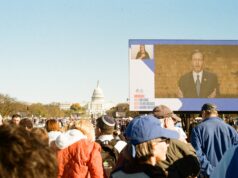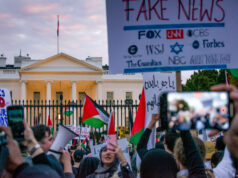Editor's Note (1/7/2019): This article appeared in the Summer 2017 edition of inFOCUS Quarterly. In light of current suggestions to eliminate the Electoral College, we thought rereading it might be useful.
“The story of the Electoral College,” one pundit recently wrote, “is also one of slavery.”
Such a comment is just the tip of the iceberg. The Electoral College has been taking quite a beating lately. Even former President Barack Obama has jumped onto this bandwagon.
“The Electoral College is a vestige,” he told reporters late last year. “It’s a carry-over…[T]here are some structures in our political system, as envisioned by the Founders, that sometimes are going to disadvantage Democrats.”
Others are just as harsh in their assessments. The institution is blasted as a “loose cannon, a game of Russian roulette” or as an “archaic,” “quaint,” or “outdated” institution. It’s labeled a “living symbol of America’s original sin,” and an unfair system in which “the winner doesn’t win.”
“[M]oving to a popular vote for President,” former presidential candidate Al Gore concluded, “would be one of the initiatives . . . that could bring our democracy back to life.”
Are these critics right? Should Americans ditch the system that has given the presidency to a popular vote loser twice in the past sixteen years? Americans have abolished slavery, given women the right to vote, and expanded civil rights in all sorts of ways. Isn’t an amendment to eliminate the Electoral College the next logical step?
Emphatically, no.
A little education reveals the truth: The Founders had sound, principled reasons for creating the Electoral College. They didn’t create it because some of them were slave owners, and they didn’t create it because telephones, television, and 24-hour news channels hadn’t been invented yet. Instead, they created the Electoral College because they understood the flaws of human nature – and because they understood the dynamics that had caused other, earlier governments to implode.
The Founders weren’t ones to sit around, blindly repeating the mistakes of the past. Instead, they sought to learn from history; they set out to create something better than the failed attempts at self-governance that had preceded them.
They were more than successful, creating something that surely exceeded even their wildest hopes and dreams.
The Founders’ Objectives
The delegates to the Constitutional Convention lived at a unique moment in time. Today, Congress is too often divided into Republican versus Democratic camps. Partisanship seems to taint every discussion! But in 1787, as George Washington and others worked together in Philadelphia, political parties didn’t exist yet. Any disagreement that existed wasn’t Republican versus Democrat or Whig versus Tory. Instead, the biggest division was to be found between large and small state delegates.
It was not, as some have recently alleged, a division between slave and non-slave states.
The division between large and small states was particularly stark when it came to the topic of presidential selection.
Many large state delegates preferred a direct popular election system. Why shouldn’t the people simply vote and choose their own president? These delegates hailed from states such as Virginia, New York, and Pennsylvania. Notably, both slave owners and slavery opponents can be found in this group. On the other hand, small state delegates were worried about the prospect of a national popular vote: Many of them wanted Congress to choose the president. A wide variety of small state delegates were worried about the dangers of a simple national popular vote.
Slavery opponent Gunning Bedford of Delaware chastised the large state delegates on this point: “I do not, gentlemen, trust you,” he blasted. “If you possess the power, the abuse of it could not be checked; and what then would prevent you from exercising it to our destruction?” Slave owner Charles Pinckney of South Carolina concurred: “An Election by the people [is] liable to the most obvious & striking objections. They will be led by a few active & designing men. The most populous States by combining in favor of the same individual will be able to carry their points.”
The small states were worried about being bullied by their larger neighbors. Slavery was not the chief concern, at least not in the context of presidential elections.
Ultimately, one shared fear allowed the two sides to come together and make important compromises: The delegates to the Constitutional Convention were students of history. They understood the imperfections of human nature and the ways in which it had doomed past democracies to failure.
Flawed human beings can’t be completely trusted, as the Founders knew. Power corrupts. Selfishness, ambition, and greed can grip even the best of people. Both government officials and voters need checks and balances on any power given to them. Their study of history had taught these Founders that any other route is doomed to failure.
Self-Governing, Yes; Pure Democracy, No
With all this knowledge in their back pocket, the Founders could not create a pure democracy for their new country. They wanted to be self-governing, of course. They had just fought a revolution in part because they had no representation in Parliament. The principles of self-governance were very important to them. On the other hand, they knew that, as a matter of history, pure democracies have a tendency to implode.
Alexander Hamilton would refute the idea that a pure democracy is the “perfect” type of government. “Experience has proved that no position in politics is more false than this,” he wrote. “The ancient democracies, in which the people themselves deliberated, never possessed one feature of good government. Their very character was tyranny; their figure, deformity.” The nation’s second president, John Adams, would agree. “Democracy never lasts long. It soon wastes, exhausts, and murders itself. There never was a democracy yet that did not commit suicide.” Other Founders called pure democracy “the greatest of evils” or “subject to caprice and the madness of popular rage.”
In short, mob rule can be very dangerous.
In a pure democracy, 51 percent of the people can tell the other 49 percent what to do – all the time, without question. Imagine what a mob mentality can do in the wake of a terrorist event such as 9/11. A bare, emotional majority could enact any law it wanted to, regardless of its impact on the rest of the country. Religious freedoms and civil liberties could easily be infringed. Even very sizable minorities could be tyrannized.
The Founders wanted to avoid that situation at all costs.
What, then, were they to do? How could they create a Constitution that allowed the people to be self-governing, even as they erected hurdles to stop (or at least slow down) irrational, bare majorities? How could minority political interests, especially the small states, be protected from the tyranny of the majority?
In other words, what constitutional provisions would allow majorities to rule, but would also require them to take the needs of the minority into account?
The delegates to the Constitutional Convention solved the problem by creating a Constitution that combines democracy (self-governance) with federalism (states’ rights) and republicanism (deliberation and compromise). The Congress is composed of a Senate with “one state, one vote” representation, while the House relies on “one person, one vote” representation. American government is divided into three co-equal branches: executive, legislative and judicial. The Constitution provides for supermajority requirements to do things like amend the Constitution or ratify a treaty.
And, of course, our Constitution creates a unique method by which presidents are elected: the Electoral College.
All these constitutional checks and balances enable Americans to be self-governing, even as mob rule and majority tyranny are avoided.
The invention of the Internet, the airplane, or the iPhone hasn’t changed anything about this situation, whatever news media headlines might say. Humans are still fallible. Power still corrupts. Bare majority groups will still bully others, if they are given the opportunity to do so.
The checks and balances in the Constitution – including the Electoral College – are still needed to safeguard liberty in our imperfect, human world. Moreover, our unique presidential election system also provides many benefits that no one anticipated.
Modern Benefits of the System
The Electoral College operates today as a unique blend of democracy and federalism. We have a two-phase election process in this country. Taken together, these two steps ensure that both individuals and states are taken into consideration when a president is elected.
The first step in our presidential election is an entirely democratic process. We hold 51 of these purely democratic elections, each and every presidential election year: one in each state and one in the District of Columbia. Voters who head to the polls on Election Day in November are participating in this part of the process. Their ballots decide which electors will represent their states in the second phase of the election.
In 2016, for example, most voters in Ohio cast a ballot for businessman Donald Trump. Thus, the state of Ohio appointed 18 Republicans to serve as its electors. If Hillary Clinton had won, then 18 Democrats would have been appointed instead.
While the first phase of our election is a democratic election among individual voters, the second phase is a federalist election among the states. This election is held in December. This second vote in December – not the November vote – determines the identity of our next president. The Constitution provides that the candidate who gets a majority of states’ electors (currently 270) wins the White House.
The Electoral College’s unique blend of democracy and federalism provides many benefits that sometimes get taken for granted.
First, the system encourages presidential candidates to build national coalitions of voters. Candidates can’t focus too exclusively on regional majorities or special interest groups. Polling large margins in isolated regions of the country will doom a candidacy to failure. Hillary Clinton demonstrated the truth of this statement in 2016: She won the national popular vote, but only because she’d disproportionately relied on two states: New York and California. More than 20 percent of Clinton’s 65.8 million votes came from only those two states. Once they are removed from the national total, the situation reverses itself: Trump leads Clinton by more than 3 million votes.
To be successful, a candidate must win simultaneous, concurrent majorities in many states nationwide. Such victories tend to be achieved by the candidate who does the best job of reaching out to a wide variety of voters in many different parts of the country.
The election in 2016 admittedly felt a lot more divisive than other historical examples, but it also echoes a dynamic that existed in the post-Civil War years. In the late 1800s, the country was sharply divided between North and South. Fortunately, the Electoral College was one influence that healed division and brought the country back together. Consider the fact that, given the electoral map in those days, Democrats could never win the presidency unless they won at least one state that leaned Republican. On the other hand, Republicans couldn’t afford to lose even one state if they wanted to keep the White House.
In short, both sides had incentives (whether they liked it or not) to reach a hand across the political aisle. Those incentives ultimately brought our country to a healthier place. They can and will do the same today.
The Electoral College provides another benefit that too often goes unnoticed: It controls the effect of fraud and error on national vote totals.
In order to influence national vote totals today, you have to know when and where to steal a vote. And if one person can predict this location, then every poll watcher/lawyer in the nation can, too! It is hard to steal votes where it matters the most. Moreover, when problems do occur, these issues can be isolated to one or a handful of states.
Now consider a world without the Electoral College: Any vote stolen in any part of the country would always affect the national tally. Dishonest people could easily steal votes in the bluest California precinct or the reddest Texas one, knowing that they would be affecting the final outcome. Fraud would be rampant.
An American historian once said of the Founders’ views on their presidential election system: “[F]or of all things done in the convention,” Max Farrand wrote, “the members seemed to have been prouder of that than of any other, and they seemed to regard it as having solved the problem for any country of how to choose a chief magistrate.”
Any country. Surely that would include 21st-century America.
Tara Ross is the author of Enlightened Democracy: The Case for the Electoral College and We Elect a President: The Story of Our Electoral College.






